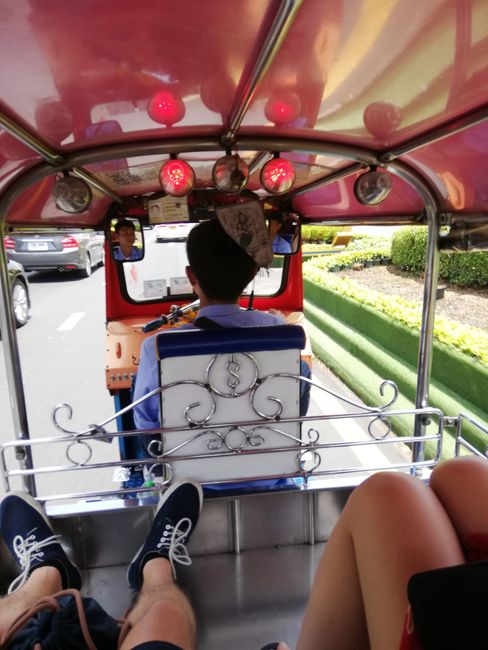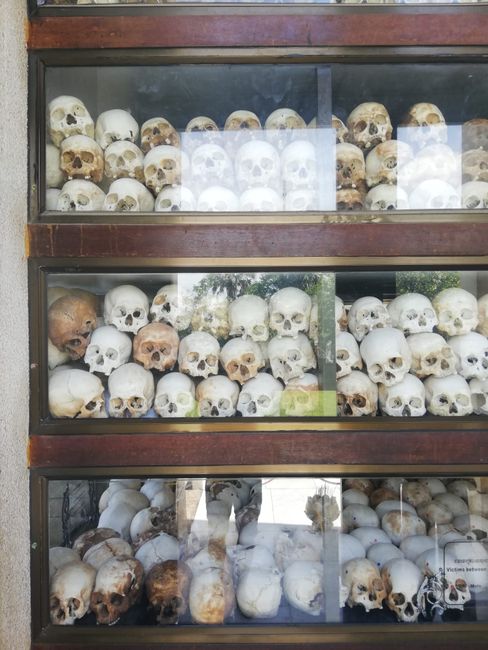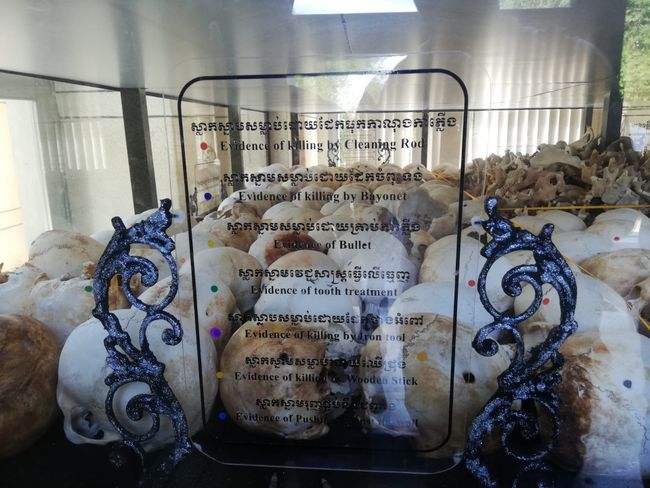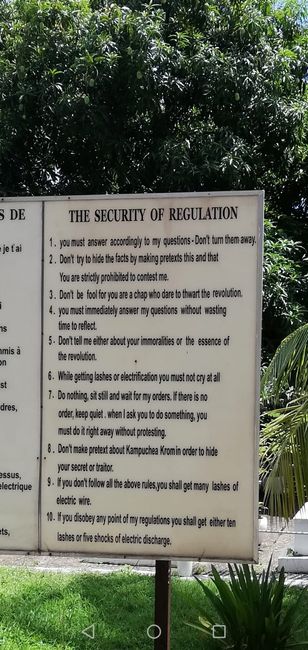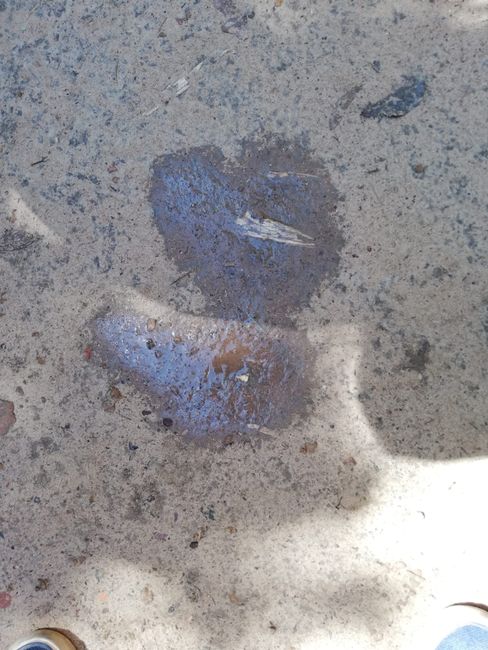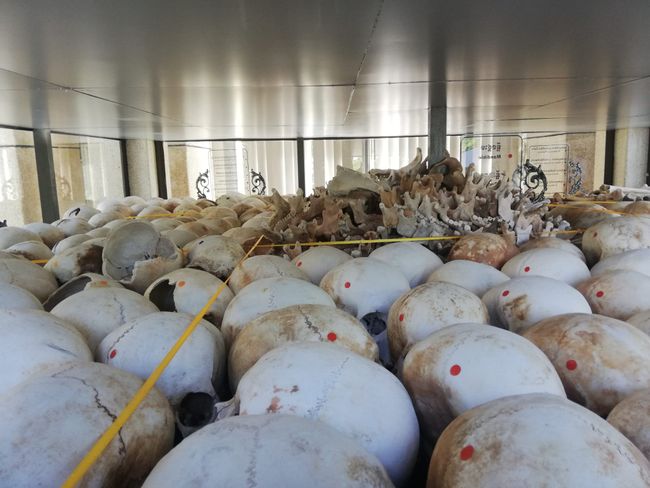Khmer Rouge
प्रकाशित: 22.07.2019
समाचार पत्रिका के लिए सदस्यता लें
Well, as promised, the post about the S-21 prison and the Killing Fields:
Cambodia's history in the 70s is almost impossible to put into words. It all started with the Vietnam War, when the Prime Minister of Cambodia allowed North Vietnam to use the Cambodian border. Shortly after, bombings from the USA followed. In addition, there was the incredibly large gap between the rich and the poor at that time, and a communist visionary who called himself Pol Pot. More and more people were drawn to him, and within a few days, he took the position of leader in Cambodia. The brief joy of a new beginning quickly faded away: all people, young or poor, were sent to the countryside and had to work there for 12-15 hours a day. They were only given 2 cups of porridge to eat per day. The cities were empty, everything now belonged to the so-called 'Khmer Rouge'. They were extremely paranoid that anyone could threaten their system and sent every possible 'enemy' to prison (government officials, intellectuals (just wearing glasses was enough to be considered intellectual), any minorities, artists, tourists, people suspected by others - anyone could be targeted). In total, 3 million people died (half of the population at that time) from hunger, exhaustion, ... 1.3 million of them were killed. Once you were imprisoned, you would not come out alive. You were tortured until you died or admitted to being an enemy of the system. After that, you were sent to the Killing Fields. The Khmer Rouge would dig a hole and people had to kneel at the edge. Then, one by one, they would be killed. Sometimes they would cut off their ears, some had their throats slit, others had their skulls smashed. To drown out the screams, the Khmer Rouge would play music. Then they would push all the people into the pit and pour toxic chemicals over them, partly to get rid of the stench, but also to make sure that everyone was truly dead (no one has ever survived the Killing Fields). Women with babies were forced to watch as their children were brutally killed and were then killed themselves. Even the children were tortured and killed, as the Khmer Rouge feared that they would seek revenge on their parents once they were old enough.
It was only when a group of the Khmer Rouge told the Vietnamese that it had gone too far and they should stop, that the Vietnamese intervened and took over control. In the S-21 prison, we met two survivors who were able to be liberated by the Vietnamese. They still had many severe injuries on their bodies from the torture. What they told us was unbelievable.
The conflicts with the remaining Khmer Rouge and the government continued until 1998, the year when Pol Pot died and the government decided to grant amnesty to the child soldiers of the Khmer Rouge. Only 5 people were convicted. However, until 1998, the UN supported the Khmer Rouge and wanted them to continue to be the official representatives of the country. One wonders why, that cannot be possible! Well, the USA was concerned that China was gaining too much power in Southeast Asia (because the Vietnamese, who controlled Cambodia, were under Chinese influence). It was preferable for them to support the Khmer Rouge. It shocked us deeply that as part of the UN, we could tolerate something like this because of power struggles between great powers.
All in all, this was probably one of the most intense experiences that both of us have had in our lives, and we still can't believe everything we saw.
समाचार पत्रिका के लिए सदस्यता लें
उत्तर

